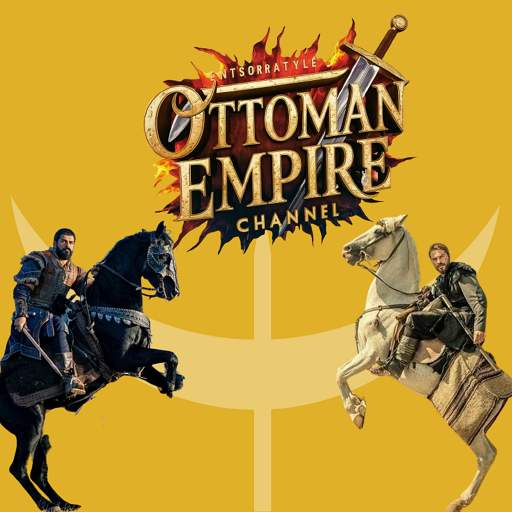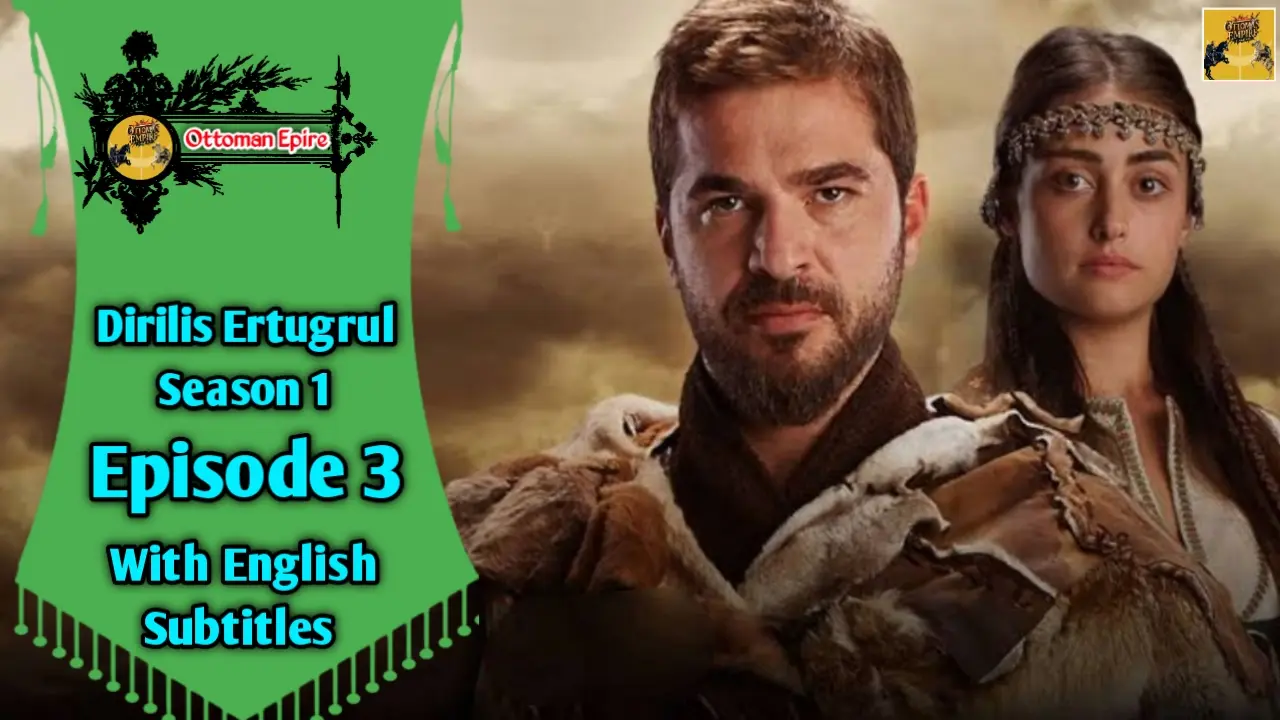Dirilis Ertugrul Season 1 Episode 3
Ertuğrul’s Triumphant Return from Aleppo and the Shadow of New Challenges
Dirilis Ertugrul Season 1 Episode 3
Introduction: A New Dawn for the Kayı Tribe
This episode opens on a sweeping, emotional note with Ertuğrul’s return from Aleppo carrying the long-awaited news of a new homeland for the Kayı. For a tribe weary of displacement, hunger and uncertainty, his arrival is not just the return of a leader but the rebirth of hope itself. Every tent, every family and every Alp responds to his presence with an almost palpable relief; after so many trials, here at last is a moment of joy. The show draws the viewer into that collective exhalation, making it easy to imagine the cold winds of the plateau softening under the warmth of his news. And yet, as with much of Diriliş Ertuğrul, this ray of light is deliberately set against darker clouds on the horizon, foreshadowing the complex struggles that will soon follow.
Ertuğrul’s Return: Symbol of Hope and Leadership
Ertuğrul’s return functions as more than a plot device; it embodies the tribe’s collective longing for stability, dignity and a future. In earlier episodes, the Kayı were penned in by famine and politics, their migration plans stalled by external pressures. When Ertuğrul rides in with the promise of a new homeland, the tribe’s spirits rise in unison and the viewer feels that surge as well. Halime’s joy at his safe return forms an emotional counterpoint to the public celebrations, reminding us that this is also an intensely personal reunion between two people bound by love and sacrifice. In this sense the episode underlines a core theme of the series: that leadership is not just a function of authority or military skill but of the deep, almost spiritual trust between a leader and his people.
“A leader is not only the head of a tribe but the heart of its people.”
A Short-Lived Moment of Happiness
The episode is careful, however, to prevent that joy from becoming complacent. No sooner has Ertuğrul dismounted than he begins to discover the tensions and betrayals that have brewed during his absence. The tone shifts subtly from bright relief to sober realism, echoing the idea that real leadership is never just about triumphant returns but about dealing with the messy aftermath of absence. The Kayı’s happiness is therefore layered; they are preparing for a new start, but the narrative suggests that new beginnings often come with hidden costs. This careful interplay between optimism and foreboding keeps viewers emotionally invested, turning what could have been a straightforward “good news” episode into a meditation on the weight of responsibility.
The Kayı Tribe Prepares for a New Homeland
One of the most visually and culturally rich passages of the episode shows the tribe’s collective preparations for migration. Women pack household goods, elders plan routes and give blessings, and Alps hone their weapons and discipline. The camera lingers on Süleyman Şah and Hayme Ana watching their children’s efforts with pride, embodying the continuity of generations and the moral backbone of the tribe. This is not only a narrative interlude but a window into the rituals and rhythms of nomadic life that have defined Turkic culture for centuries. It’s in these details — the tying of loads, the preparation of horses, the symbolic lifting of tents — that the show transcends simple adventure drama and becomes cultural storytelling.
Table: Key Highlights from the Episode
| Main Event | Details | Impact | Characters Involved |
|---|---|---|---|
| Ertuğrul returns from Aleppo | Brings news of a new homeland | Restores tribe’s hope and morale | Ertuğrul, Halime, Süleyman Şah |
| Tribe prepares for migration | Joyful preparations and pride among elders | Reinforces unity and resilience | Hayme Ana, Alps, Kayı people |
| Unseen dangers loom | Templar plots and political intrigues remain hidden from the tribe | Foreshadows upcoming crises | Gündoğdu, Templar forces |
| Ertuğrul’s dual burden | Balances love for Halime and duty to tribe | Highlights personal sacrifice of leadership | Ertuğrul, Halime |
Hidden Threats: The Unseen Enemy
Even as the tribe bustles with preparations, the episode threads in hints of looming danger. We see Gündoğdu far away on a perilous hunt, unaware of the traps being set for him, and we catch glimpses of the Templars spreading their influence like a shadowy network through the veins of the Islamic world. These sequences expand the series’ scope from the immediate life of the camp to a broader geopolitical canvas. Historically, the Templars symbolise the hidden tensions of the medieval era — crusading zeal, covert operations and the clash of empires — and their inclusion here transforms the story from a tribal saga into a chessboard of civilizations. For the viewer, this layering of threats builds suspense and prepares the ground for future confrontations.
Love and Leadership: Ertuğrul and Halime’s Emotional Journey
Amid all these political currents flows a deeply human story. Halime’s visible relief at Ertuğrul’s return is a moment of tenderness, but it also highlights the emotional price of his leadership. Every time he rides out, she risks losing him; every time he returns, their time together is shadowed by new duties and dangers. The episode uses their relationship to explore a universal theme: the difficulty of balancing personal happiness with public duty. This struggle, portrayed with quiet glances and brief dialogues, resonates strongly with modern viewers who see in Ertuğrul not just a legendary warrior but a man wrestling with choices that cut to the heart of identity and love.
The Burden of Destiny and the Test of Loyalty
As the episode builds towards its close, the real weight of destiny settles on Ertuğrul’s shoulders. Viewers see not only a commander returning with good news but also a man who knows the road ahead will demand painful decisions. This episode quietly tests the loyalty of the Kayı as well. Each family member, elder, and Alp must decide whether their faith in Ertuğrul is strong enough to endure the trials of migration and the invisible enemies plotting in the background. By framing leadership as a collective act rather than a solitary one, the series underscores how trust and unity are as vital as swords and horses in any quest for survival.
Cultural Resonance and Modern Lessons
Beyond its medieval setting, Episode 3 offers lessons that feel strikingly current. The tension between hope and threat mirrors the challenges faced by communities today when stepping into unknown futures. The way Halime and the women of the tribe anchor morale speaks to the often-unseen emotional labor that sustains societies during change. For modern viewers, the episode becomes more than historical drama; it’s a meditation on resilience, shared responsibility, and the price of building a new home. This layered storytelling ensures Diriliş Ertuğrul remains not only entertaining but also meaningful long after the credits roll.
Symbolism and Cultural Layers
Beyond its plot, the episode is rich in symbolism. The fluttering banners evoke both the tribe’s aspirations and the fragility of their situation; the dismantling and re-erection of tents serves as a metaphor for resilience and renewal. The rituals of blessing before migration echo centuries-old traditions that gave spiritual meaning to physical movement. For audiences interested in history and culture, these scenes offer more than spectacle; they offer insight into the values — loyalty, faith, courage — that sustained societies in times of upheaval. In this way Diriliş Ertuğrul educates as well as entertains, weaving together drama and heritage.
Fan Reactions and Speculation
Among fans, this episode is widely regarded as a turning point. Online discussions often focus on the emotional reunion between Ertuğrul and Halime and speculate on how Gündoğdu’s storyline will intersect with the Templars’ plots. There is also keen interest in how the promised new homeland will alter tribal politics and whether Ertuğrul can maintain unity in the face of external threats. By prompting these questions, the show extends its life beyond the screen, creating a participatory community where viewers debate themes of leadership, justice and destiny.
Episode Highlights in Bullet Points
- Ertuğrul returns from Aleppo with the promise of a new homeland.
- Halime’s heartfelt joy marks one of the episode’s most emotional scenes.
- The Kayı tribe begins preparing for migration with renewed hope.
- Süleyman Şah and Hayme Ana express pride in their children’s accomplishments.
- Gündoğdu faces unseen dangers during a distant hunt.
- Templar forces secretly spread their influence across the Islamic world.
- The tribe remains unaware of the looming threats ahead.
- Ertuğrul carries both the weight of love and the destiny of his people.
- Symbolism of banners, tents, and unity reinforces cultural depth.
- The episode ends with hope mixed with suspense for what lies ahead.
Predictions for Upcoming Episodes
Given the foreshadowing woven into this chapter, it’s clear that future episodes will deepen the Templar threat, reveal the full consequences of Gündoğdu’s perilous situation and test Ertuğrul’s ability to hold the tribe together through transition. Viewers can also expect the show to continue developing Halime’s role, highlighting the often-overlooked contributions of women to tribal survival and morale. These threads promise a rich tapestry of action, intrigue and emotional depth in the episodes ahead.
Conclusion: A Sword and a Banner
This episode encapsulates everything that makes Diriliş Ertuğrul compelling: heroic leadership intertwined with human vulnerability, cultural authenticity woven into high drama, and a sense of destiny that extends beyond any single character. Ertuğrul stands at the center as both a sword — ready to defend his people — and a banner — symbolizing their collective hope. The Kayı’s journey toward a new homeland is more than a migration across land; it is a passage through trials, faith and transformation.
What do you think about this turning point in the series? Share your thoughts in the comments below — how do you see Ertuğrul’s decisions shaping the future of the Kayı?
FAQs About This Episode
A1: It focuses on Ertuğrul’s return with hope for a new homeland while hinting at hidden dangers and the personal sacrifices of leadership.
A2: By showing him as both a loving partner and a strategic leader balancing emotional bonds with tribal duty.
A3: Nomadic migration rituals, political intrigue and the Templar threat mirror medieval Anatolian history and Islamic–Christian tensions.
A4: Her joy highlights the human cost of leadership and love, grounding the story’s emotional stakes.
A5: Increased tension from the Templars, deeper internal conflicts within the tribe and a greater test of Ertuğrul’s leadership.
- Dirilis Ertugrul Season 1 Episode 2 A Journey Between Hope and Betrayal
- Kurulus Osman Season 6 Episode 167 The Sacred Oath
- Dirilis Ertugrul A Journey of Struggle And Leadership
- Kurulus Osman Season 6 Episode 175 Akhisar Siege and Sofia’s Trap
- Mehmed Fetihler Sultani Season 2 Episode 23 Siege Tactics and Inner Conflicts

